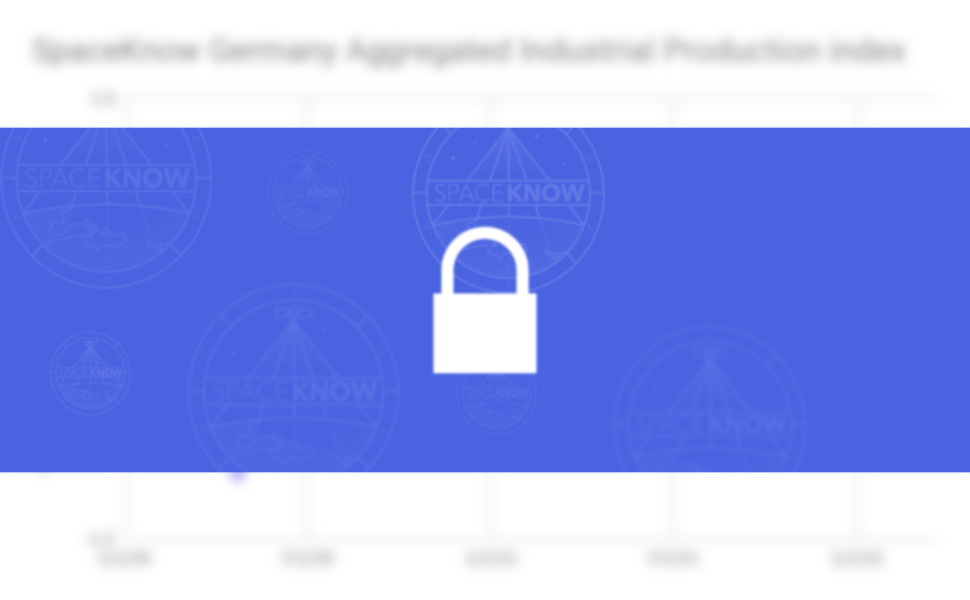FedEx was thrust into the spotlight when its preliminary results for its first fiscal quarter, announced on September 15, missed its forecast. The price of its stock dropped significantly. Spaceknow provides several indices observing FedEx distribution centers in the US as a part of the US logistic datasets. These indices can provide essential information about FedEx’s performance well before the release of its quarterly results.
The company faces challenges in Europe and Asia. This includes general macroeconomic weakness in both regions and the TNT integration in Europe. TNT acquisition in 2018 was supposed to improve FedEx’s position in Europe; its integration continues to add to FedEx’s expenses because of TNT’s outdated physical and technology infrastructure.
In reaction, FedEx announced cost savings and flight frequency reduction, while raising shipping rates. The company’s CEO, Raj Subramaniam, also pointed to a broader macroeconomic slowdown as an explanation for its disappointing results.
Some commentators attribute the FedEx trouble to its own errors, citing low efficiency and mismanagement. FedEx’s main competitors, including UPS, seem to perform better in the current economic environment.
Spaceknow Satellite Activity Index (SAI) in Figure 1 shows the change in the area occupied by trucks at the loading docks and containers stored outside FedEx logistic centers. The index correlates well with the core business activity of FedEx – its daily package volumes. Last but not least, the index correctly points to a decline in the package volumes typical for recent FedEx performance.
Figure 1: Fedex US Packages (Ground and Express) against percentage of high activity Fedex distribution centers (90-day moving average).
Figure 2: Activity Structure Index – the percentage of FedEx distribution centers with high and low activity levels (90-day moving average)
The dramatic decline in FedEx suggested in Figure 1 is confirmed by the Spaceknow Activity Structure Index (ASI) in Figure 2. This index shows the percentage of FedEx logistic centers with a higher or lower than usual level of activity. We see the number of high activity declining and low activity growing since early 2022.
As the figures above document, FedEx operations in recent quarters have been marked by declining package volumes. This decline was until recently not accompanied by a fall in revenues. This points to the company’s ability to increase its revenue per package – which largely depends on its ability to transfer price pressures to customers (e.g. through the fuel surcharge). FedEx seems to be successfully exploiting the inflationary environment.
To complete the picture, we use the Spaceknow Accumulated Level Index (ALI) (Fig. 2) which uses cumulative sums of positive and negative changes in the covered area allowing us to capture long-term economic activity but also an inventory (or vehicle) buildup.
Figure 3 shows that the index correlates well with the total package volume until mid-2021 but continues to grow even when FedEx’s volumes start to fall sharply. The index captures an accumulation of idle FedEx trucks in the parking lots or containers on the ground, highlighting the demand troubles the company faces.

Figure 3: Fedex US Packages (Ground and Express) versus the 90-day moving average of Spaceknow ALI index
FedEx’s reliance on the per package revenue combined with falling physical volumes suggests that its revenues were not sustainable even before its last financial results were announced. Spaceknow indices, delivered in near real-time, can help to anticipate and analyze this situation while not relying on the company’s reporting. SpaceKnow will continue to closely watch FedEx together with other key logistics and supply chain companies.
SpaceKnow’s nowcasting products bring confidence and reduce risk to operations and investments around the world. Interested in learning more about SpaceKnow’s commercial and nowcasting products? Reach out to info@spaceknow.com
Did you find value in this article? Subscribe using this link, and be the first to receive the next SpaceKnow Nowcasting Newsletter (SNN).